Museum
Geological Museum of Peking University, Beijing, China
The Geological Museum of Peking University, formerly known as the Geological Showroom of Peking University, founded in 1909 and renamed as the Geological Exhibition Hall of Peking University in 1923, is the earliest geoscience museum among Chinese universities. It has played an important role in the beginning of Chinese geological and paleontological education. Because of department adjustments in 1952, all the collections and equipments were incorporated into the new Peking Geology College. The Geological Museum of Peking University was re-established in 1955 when the Geology Department of Peking University was restored, with specimens such as minerals, rocks and fossils. The total collection is more than 20,000 specimens, more than 2,000 of which are for display. The specimens were mainly collected by the teachers and students of Peking University from field work in domestic scientific research and teaching, and given by alumni and international friends as gifts from more than 10 counties such as the former Soviet Union, the United States, France, Finland, Switzerland, Italy, Australia, and Japan. In this museum, you can enjoy the magic of nature from various shiny crystal and rock specimens. Also, you can explore the biological evolution from the lifelike fossil specimens.
The Geological Museum of Peking University consists of an Exhibition Hall, Archive and Teaching Practice Showroom. As a multi-functional education place, it integrates specimen display, scientific research,academic exchange and teaching activities, which is an important window to display geological teaching and scientific research achievements of Peking University, a classroom for quality education of college students and also a base of geological talent training. The Geological Museum of Peking University was recognized as a science research institution by Peking University in 2010 [School No. (2010) 99], and awarded as the Beijing municipal science base by the Beijing Science and Technology Commission in 2013 (2013-2015), which means the museum undertakes tasks of earth science promotion and education.

1934 site

1993-present
The Geological Museum of Peking University is located in Yifu NO.2 Buliding (New Geology Building), with a total area of about 1000 square meters, including Exhibition Hall and Geological Teaching Room.
The area of Exhibition hall is about 400 square meters which is free to the society. It contains one thousand typical geological specimens, classified by mineral, rocks, ore deposits, tectonic geology and paleontology. Some of these specimens were collected by teachers and students of Peking University and some donated by other research institutions and individuals, after restoring the subjects of geology and geography in 1950s. Some geological achievements and geological popularization of science exhibitions are also regularly organized in the Exhibition Hall. Recently, more than 30 excellent mineral crystals are exhibited, which are provided by Mr. Meng Taoming.
Geological Teaching Room is a new professional exhibition hall and includes more than 2000 specimens, which is mainly open to undergraduate and graduate students who study earth science. The area of the room is around 600 square meters, including three parts: the exhibition of field work, the exhibition of professional basic courses and the exhibition of research achievements, respectively. The exhibition of field work displays all kinds of typical tectonic geology, geomorphologic phenomenon and some rock and mineral specimens which were collected by students in the field work. The exhibition of professional basic courses displays all kinds of typical specimens according to the main geology basic subjects, including General Geology, Mineralogy, Petrology, Mineral Deposit, Structural Geology, Historical Geology and Paleontology. The exhibition of research achievements displays the scientific research achievements of teachers and students in recent years, and some characteristic specimens, such as Triassic marine reptiles.
In addition, the Geological Museum of Peking University contains five Specimens Preservation Room, is about 1000 square meters, including about 100000 typical geological specimens.
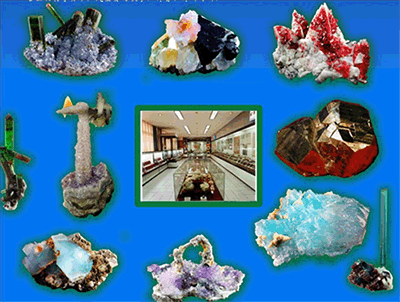
Mineral exhibitions

Fossil exhibitions
l Geology Major Course Pedagogical Practice
Peking University Geology Freshman Enrollment Education
Ø Two Public Elective Courses: “Life in the History of the Earth” and “Introduction to the History of the Earth”.
Ø Four Major Basic Courses for Undergraduates: “Paleontology” “Historical geology” “Mineralogy and crystallography” “Comprehensive Outdoor Geological Practice”.
Ø One Professional Required Course for Graduate of Paleontology Major: “Paleontology Methodology”
Ø Two Professional Elective Courses: “Biostratigraphy” “Museology”.
l Primary and Secondary Education Assistance
As the Teenager Education and Practice Out school base of Hidian District, the Geological Museum of Peking University has undertaken the natural science extracurricular practices of many primary and secondary schools near Peking University including The Primary School Attached To Peking University, Zhongguancun No.2 Primry School, and Beijing Bayi School, etc..
During the summer vacation, the Geological Museum of Peking University wass open free of charge and welcomed about 6,000 people of summer camp visiting groups from all over the country and fulfilled the responsibility of social popularization, education and inheritance of geoscience knowledge.
l Student Education
In recent years, based on the relevant project of the Museum and the established cooperative relationship of international scientific research, the PhD candidates Ji Cheng, Ma Letian and Fu Wanlu, etc. of our college studied in the Department of Geology of the University of California, Davis as exchange visitors and has made a beneficial exploration of educating outstanding students based on the international cooperative exchange platform.
The museum has undertaken the popularization co-construction projects of Beijing Municipal Education Committee and Municipal Scientific Committee and enhanced the popularization capacity of the Museum. In addition the Museum has held activities on some significant Earth Science Publication Days and effectively implemented the social popularization of the Earth Science Knowledge.
l Universal Parent-Child Peking University Paleontology Class
http://www.qinziying.com/html/HQQZ2014/ZXHD2014/2014-11-28/Detail_558763.htm
http://www.qinziying.com/html/hqqz2014/ZXHD2014/2014-12-22/Detail_558803.htm
l “3.15”、 “4.22”(Earth Day)、“5.16”(School Open Day)、“5.18”(Museum Day)、Geology Summer Camp, etc. scientific activities;
l The popular science series lecture Wang Shiqi “Appreciation and Identification of Gemstone and Jade”, etc.;
l Interaction of Science Open Month in Summer Vacation:
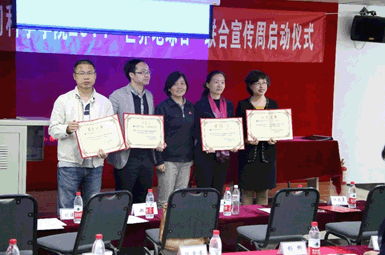
Launch ceremony of Publicity week
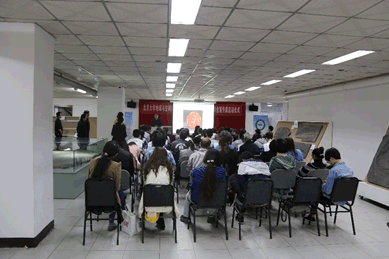
Science lecture by the famous teacher of Peking University
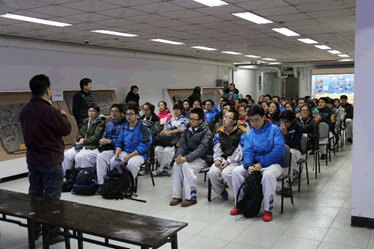
Assistant dean Liu Jianbo answer the questions of recruit students to the teachers and students who came from Beijing Bayi School
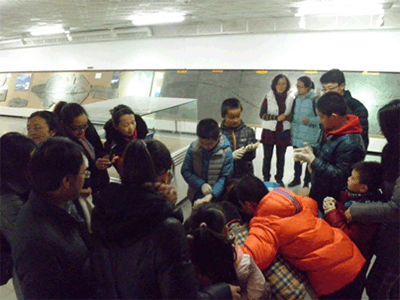
practice of fossil modeling
Geological Museum of Peking University, together with Department of Geology, Peking University, has established steady scientific research team with domestic and overseas partners (say Pro. Tintori from Department of Geology, Milan University, Italy; Pro. Motani from Department of Geology, UC Davis, US; Anhui Paleontological Museum, China; Xingyi Land Resources Bureau, Guizhoum, China; Wumengshan National Geological Park, Guizhou, China; etc.). Members cooperate on undertaking research projects, organizing research activities, and publishing research paper, which make this team well-known worldwide.
l Visitors Reception
Geological Museum of Peking University has established researching collaboration with scholars from all over the world, such as Pro. Motani and Dr. Kelley from Department of Geology, UC Davis, US; Pro. Rieppel from Field Museum, US; Pro. Tintori from Department of Geology, Milan University, Italy; Dr. Maisch and Dr. Matzke from Department of Geology, University of Tubingen, Germany; Dr. Lopez-Arbarello and Dr. Sferco from Bayerische National Museum of Geology and Paleontology, Germany; Dr. Schoch from Baden-Württemberg National Museum of Natural History, Germany.
Also, Geological Museum of Peking University has received many visitors who came for specimen observation, such as Dr. Dominici from Museum of Natural History, University of Florence, Italy; Nadia Lupi、Marco Lupi、Yuri Lupi、Pascal Cattaneo、Markus Felber、Nice Felber-Villa、Pietro Rusconi and Diana Rusconi from the world natural heritage site of Monte San Giorgio Triassic Marine Vertebrate Fauna, Switzerland; Pro. Caldwell and Dr. Simoes from University of Alberta, Canada; Dr. Scheyer and Dr. Neenan from Department of Paleontology, University of Zurich, Switzerland.
l Academic Conferences Organization
Three Conferences have been successfully held:
The 1st International Symposium on Triassic and later Marine Vertebrate Faunas, 28 August - 8 September, 2010, Beijing, China.
The 2nd International Symposium on Triassic and later Marine Vertebrate Faunas, 10-15 September, 2013, Xingyi, Guizhou, China.
International Symposium on Jade, 1-6 September, 2011, Beijing, China.
l Excavation and Collection of Specimens
Geological Museum of Peking University has always been research-oriented since its foundation, and has undertaken a good number of scientific research tasks. In recent years, Geological Museum of Peking University, together with local government and Land Resources Bureau, has launched the project of “Comprehensive Study of the Important Triassic Marine Vertebrate Fauna in Southern China” with fund of the 985 Project and National Natural Foundation. This project has allowed the museum to accumulate a number of rare specimens of marine vertebrates, and also promoted research on vertebrate paleontology in Department of Geology, Peking University.
l Significant Breakthrough in the Scientific Excavation and the Protection of Anhui Chao Lake Early Triassic Chaohusaurus Fauna Fossil Tracks Cooperated with Anhui Prehistoric Fossil Museum
The international scientific research group organized by Professor Jiang Dayong, consisted of Professor Sun Yuanlin, Associate Professor Sun Zuoyu from Peking University, Professor Andrea Tintori from Milan University and Professor Ryosuke Motani from the University of California, Davis etc. cooperating with Anhui Prehistoric Fossil Museum, carried out a systematic excavation of Chaohusaurus Fauna and found that,
1. The fossils of Chaohusaurus Fauna are found from several layers, Respectively in the borrom, middle, and upside of Nanlinghu formation, Age can dating back to the early Spathian Substage of Olenekian stage (Early Triassic);
2. The amount of fossils and biological diversity of Chaohusaurus Fauna are high. At present vertebrate fossils collected have reached 100, including 2-3 species and primordial Sauropterygia, which was commented by the Scientific News as seeking for “the most potential place of reptile that entered water earliest”.
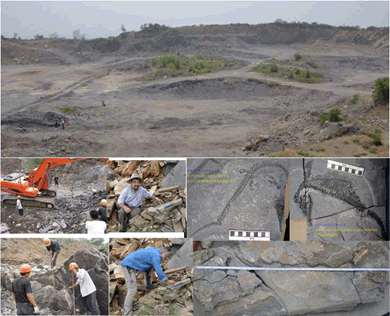
Excavation Spot, Excavation Scene and Important Fossils Obtained
l 2008 Annual National Geological Tracks Protection Project of Wumengshan, Liupanshui National Geological Park co-applied with Guizhou Panxian Land and Resources Bureau planed to establish a Fossil Original Position Protection Museum.
The Geological Museum of Peking University is the first to research on the rare marine reptiles of the fauna of Panxian, Guizhou. Since 2004, The Geological Museum of Peking University has cooperated with Panxian Land and Resources Bureau and excavated Panxian area systematically for 6 times. A large amount of fossils are collected and sections are cleared and protected. A Fossil Original Position Protection Museum was designed and constructed.
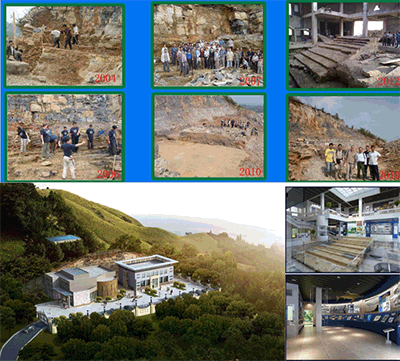
Panxian Fossil Excavation Spot and the Fossil Original Position Protection Museum to Be Built
l The Geological Museum of Peking University cooperated with the Xingyi Land and Resources Bureau of Guizhou and had a systematic section cleaning, fossil excavation and protection, of which the scale is scarcely seen in the development of the paleontology discipline.

the Fossil Original Section Protecting
Address:Number 2 of Yifu Building, Peking University, Yiheyuan Street No. 5, Haidian District, Beijing.
Traffic: 30 m north to southwest gate, East door of Peking University station, Subway line 4; 300 m north to Zhongguanyuan station, bus 365、455、307、105、205、717、731.
Contacts: Sun Zuoyu (phone) 86-010-62758391 (Emails) sunzuoyu@pku.edu.cn
Sun Yuanlin (phone) 86-010-62754151 (Emails) ylsun@pku.edu.cn
Jiang Dayong (phone) 86-010-62754154 (Emails) djiang@pku.edu.cn